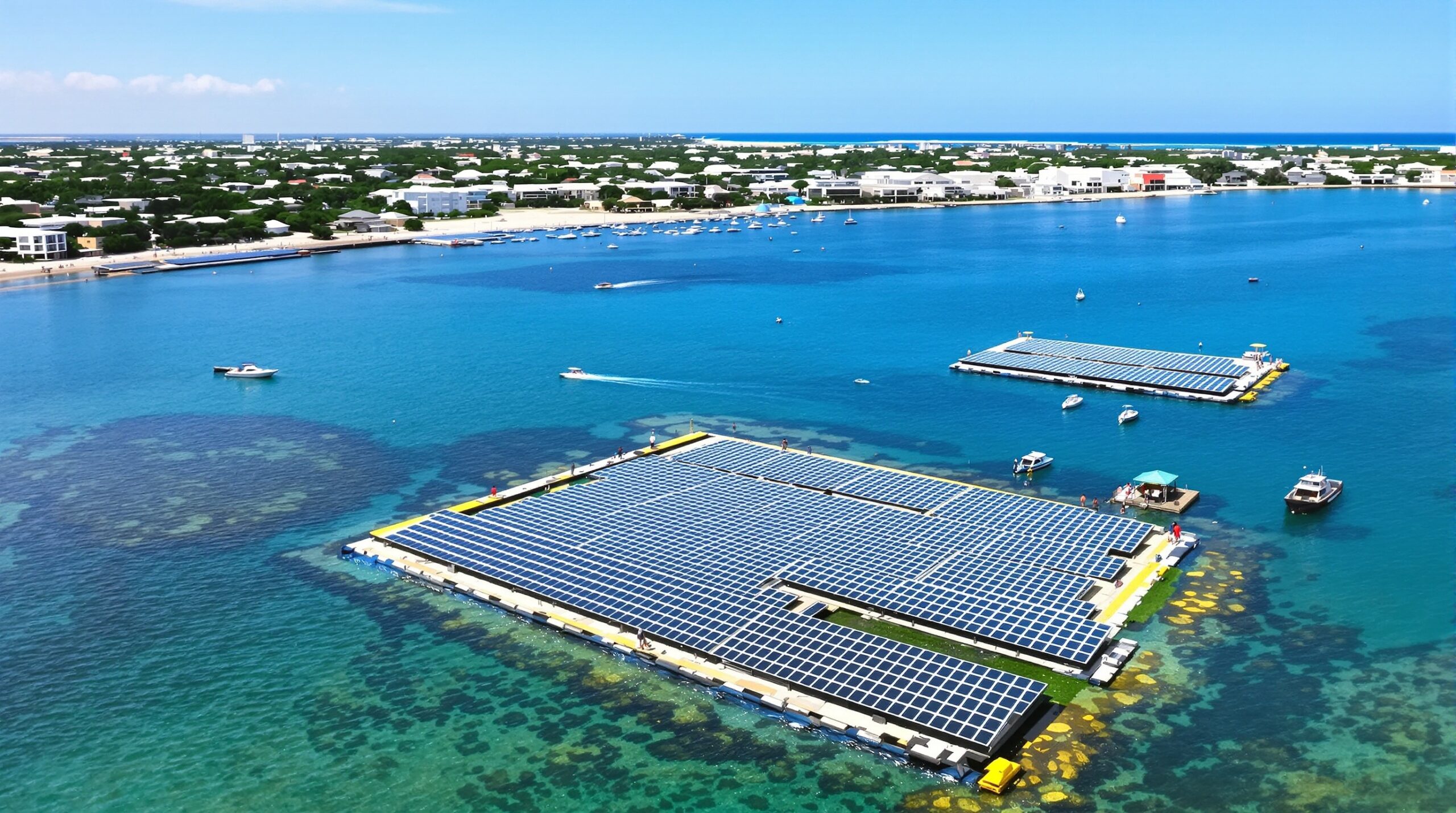Coastal towns are facing increasing challenges as climate change intensifies. Extreme heatwaves are becoming more frequent and severe, pushing local power grids to their limits. Communities are now searching for innovative solutions to keep the lights on during peak summer demand. Floating solar farms have emerged as a promising option to help manage grid strain and adapt quickly to changing energy needs.
Heat Waves and Strained Power Grids
Rising global temperatures have made heat waves a more common occurrence along the world’s coastlines. These stretches of excessive heat lead to heavy air conditioning use, causing energy demand to spike. Power grids in coastal regions sometimes struggle to keep up, risking blackouts and interrupted services for residents. Coastal communities also face additional grid strain from summer tourism.
Hotter weather can further reduce the efficiency of traditional power plants and transmission lines. As energy use soars, utilities must either ramp up supply or ask residents to conserve electricity. Blackouts impact everything from public safety to local economies. Addressing these power supply challenges has become an urgent priority for local leaders.
Floating Solar Farms: An Innovative Solution
Floating solar farms use solar panels installed on platforms that float atop bodies of water, such as reservoirs or lagoons. Unlike land-based systems, these installations use space that would otherwise be unused. Coastal towns, with their abundance of sheltered water areas, are ideal locations for deploying floating solar technology at scale.
Water, by naturally lowering panel temperatures, helps boost the efficiency of solar cells. Floating platforms can reduce water evaporation and minimize algal blooms, bringing environmental benefits alongside clean energy. These projects often use modular designs, allowing for flexible expansion as energy needs change.
Pilot Projects Gaining Traction
Several coastal towns have launched pilot programs to assess the benefits of floating solar. In the United States, coastal cities like San Diego and Miami have installed floating arrays in reservoirs and water treatment facilities. In Asia, Japan’s coastal Chiba Prefecture leads with several operational floating solar farms. Municipal governments, in partnership with energy companies, oversee careful testing and monitoring.
These pilot projects are designed to measure energy output, reliability, and integration with existing power infrastructure. Residents and town officials increasingly support these trials, attracted to the prospects of cleaner energy and grid relief. Early results have demonstrated tangible reductions in grid stress during heat waves.
Reducing Grid Strain During Summer Peaks
Floating solar farms can supply significant energy directly to local grids. Their output peaks during sunny, hot days—the same period when air conditioners drive energy demand the highest. Coastal utilities can now harness this predictable power to stabilize grid loads by offsetting some of the conventional generation needs.
By reducing reliance on fossil fuels during critical hours, floating solar installations help lower operational costs and environmental impacts. Maintaining a stable grid reduces the risk of outages, protects vulnerable populations, and ensures the safety of summer tourists. These benefits become vital as heat waves increase in frequency and severity.
Environmental and Community Impacts
Floating solar farms offer more than just energy benefits. By shading the water, they can reduce algae growth and help preserve aquatic ecosystems. Less evaporation from reservoirs conserves water—a valuable resource during summer heat waves.
Community involvement is central to these projects’ success. Local groups are consulted throughout the planning and deployment stages. Educational campaigns help residents understand the advantages and address concerns. Coastal tourism groups and fishing communities sometimes participate in design discussions to reduce environmental conflicts.
Supporting Local Economies
Floating solar projects provide new jobs and business opportunities. Local contractors may build floating systems, maintain installations, and provide ongoing management services. Coastal towns gain a reputation for pioneering green technologies, which can attract further investment and tourism. Floating solar complements other renewable sources, making towns more resilient and energy independent.
Technical and Policy Considerations
Adopting floating solar is not without challenges. Site selection requires careful analysis of local ecosystems, water depth, and weather conditions. Projects must meet environmental regulations set by local, regional, and national authorities. Maintenance needs and storm resilience are also important factors for coastal installations.
Grid integration requires robust planning and coordination with local utilities. Floating solar output can be variable, so storage technologies—such as batteries—are sometimes paired with these farms. Policymakers develop incentives, such as tax credits or streamlined permitting, to encourage more towns to participate.
Case Study: Portugal’s Coastal Innovation
A recent project near Porto, Portugal, saw a municipality partner with an international renewable energy company. Together, they launched a 5-megawatt floating solar array in a calm estuary. The installation complements a local hydropower plant, using joint infrastructure to maximize efficiency.
During the hottest days of the year, the floating array provided critical power to sustain the local grid. Outages became less frequent, and water evaporation dropped. Residents reported higher satisfaction, and city leaders now plan to expand the system. The Porto region is now a European leader in floating solar technology.
The Future of Floating Solar in Coastal Towns
As more coastal towns confront climate challenges, floating solar projects are likely to spread. Technology improvements promise even greater efficiency and storm resilience. Global organizations, such as the International Renewable Energy Agency, continue to share lessons learned and best practices.
Investment in floating solar will help communities build stable power supplies and protect vital water resources. As pilot projects become permanent installations, towns can look forward to cleaner air, fewer blackouts, and a higher quality of life. Protecting the coast and its communities will depend on bold innovation and continued collaboration.
Conclusion: Floating Solar Powers Coastal Resilience
Floating solar farms offer coastal towns a way to manage grid strain during extreme heat waves. Cleaner energy, reliable supply, and strong community benefits make this technology a key tool in climate adaptation. As towns continue to innovate, floating solar could become a standard feature of sustainable coastal infrastructure worldwide.

